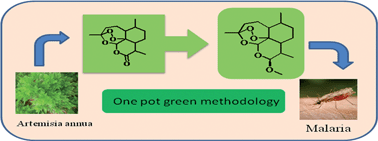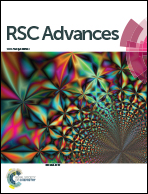One-pot green synthesis of β-artemether/arteether†
Abstract
An efficient one pot green synthesis of β-artemether/arteether from artemisinin has been developed using a sodium borohydride-cellulose sulfuric acid (CellSA) catalyst system. The green methodology is high yielding and the catalyst has good recyclability.


 Please wait while we load your content...
Please wait while we load your content...